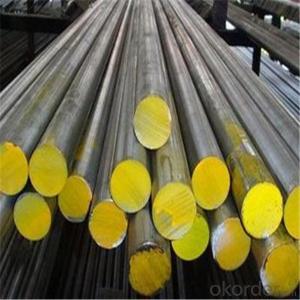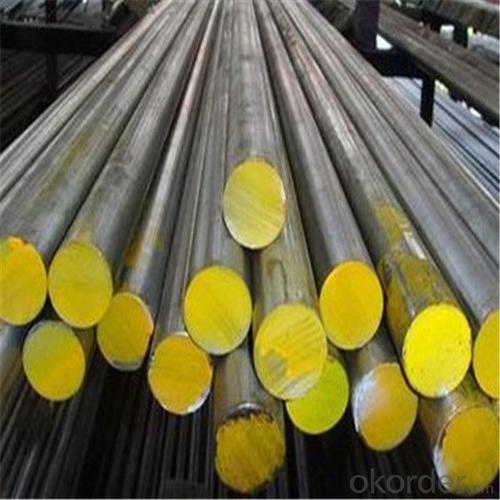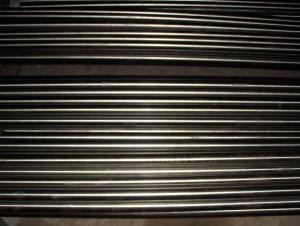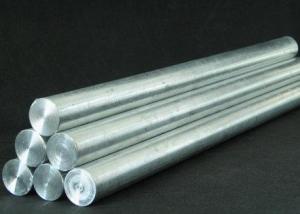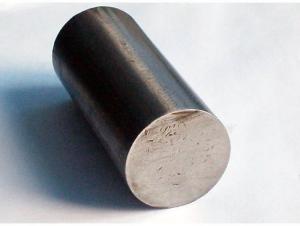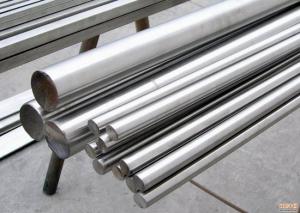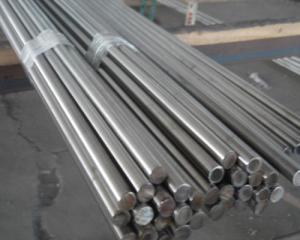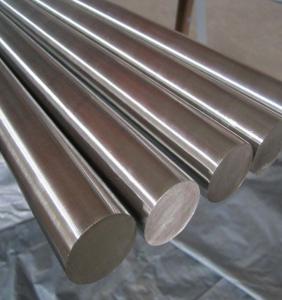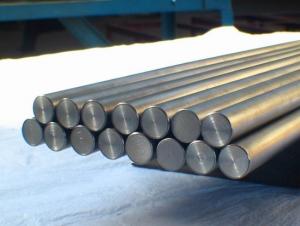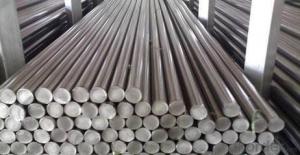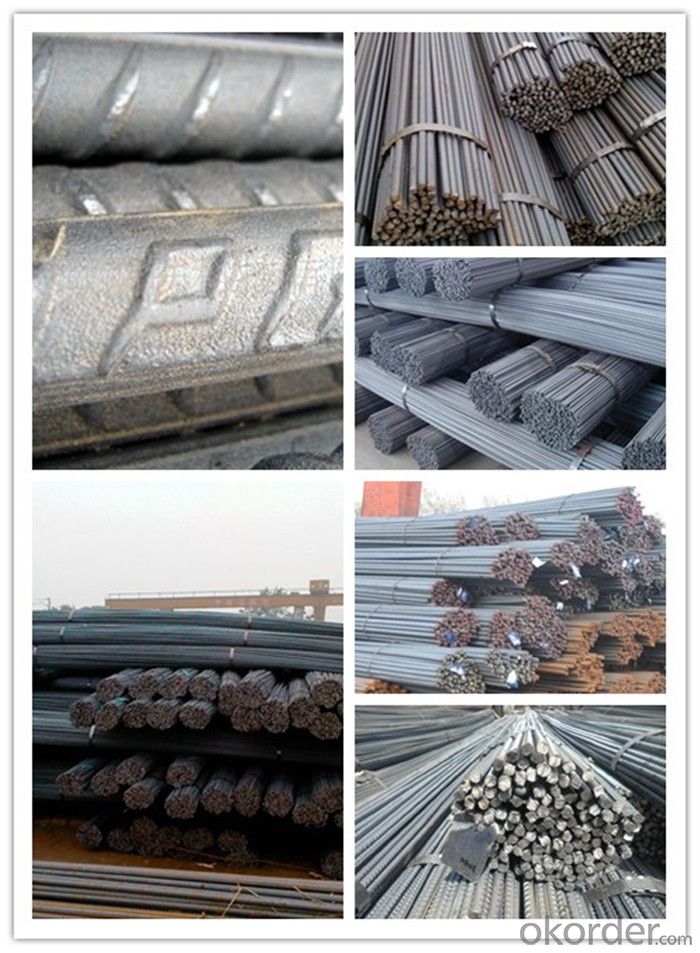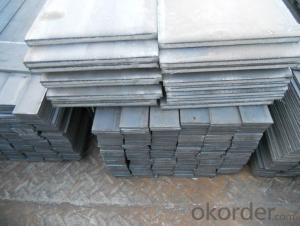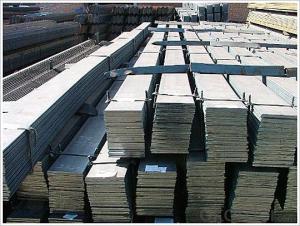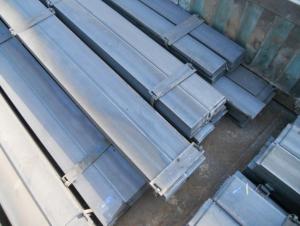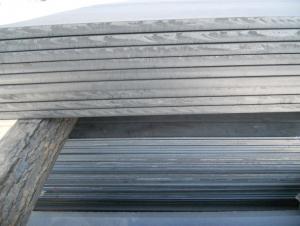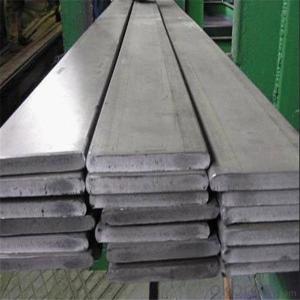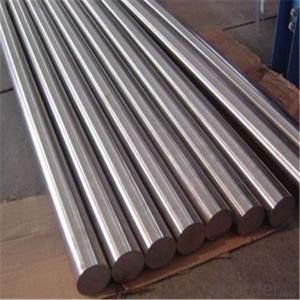Stainless Steel Rebar with competitive price
- Loading Port:
- Shanghai
- Payment Terms:
- TT OR LC
- Min Order Qty:
- 2 m.t.
- Supply Capability:
- 3000 m.t./month
OKorder Service Pledge
OKorder Financial Service
You Might Also Like
Specification
1, Diameter: 5.5mm-10mm stainless steel rebar
10m- 40mm stainless steel rebar
2, Length: 6m, 9m, 12m or customized
3, Standard: GB, ASTM, AISI, SAE, DIN, JIS, EN
OEM technology - send detailed technical parameters for accurate quotation.
2, Produce Process: smelt iron - EAF smelt billet - ESR smelt billet -
hot rolled or forged to get the steel round bar and plate
3, Heat Treatment: annealing, normalizing, tempering, quenching
4, Surface Treatment: Black
5, Quality Assurance: We accept third party inspection for all orders.
You can ask testing organizations such as SGS, BV, etc. to test our products before shipping.
Chemical Composition
| Grade | Technical data of the original chemical composition(%) | |||||
| Reinforcing steel bar HRB335 | C | Mn | Si | S | P | B |
| ≤0.25 | ≤1.60 | ≤0.80 | ≤0.045 | ≤0.045 | >0.0008 | |
| Physics Capability | ||||||
| Yield Strength(N/cm2) | Tensile Strength(N/cm2) | Elongation(%) | ||||
| ≥ 335 | ≥490 | ≥16 | ||||
| Reinforcing steel bar HRB400 | C | Mn | Si | S | P | B |
| ≤0.25 | ≤0.16 | ≤0.80 | ≤0.045 | ≤0.045 | 0.04-0.12 | |
| Physics Capability | ||||||
| Yield Strength(N/cm2) | Tensile Strength(N/cm2) | Elongation(%) | ||||
| ≥ 400 | ≥ 570 | ≥ 14 | ||||
PRODUCTS SHOW
F A Q
1, Your advantages?
professional products inquiry, products knowledge train (for agents), smooth goods delivery, excellent customer solution proposale
2, Test & Certificate?
SGS test is available, customer inspection before shipping is welcome, third party inspection is no problem
3, Payment Terms?
30% TT as deposit and 70% before delivery.
Irrevocable L/C at sight.
4, Trading Terms?
EXW, FOB, CIF, FFR, CNF
- Q: Are stainless steel bars suitable for hydrogen peroxide applications?
- Yes, stainless steel bars are suitable for hydrogen peroxide applications. Stainless steel is known for its corrosion resistance properties, which make it suitable for use with hydrogen peroxide. Hydrogen peroxide is a strong oxidizer and can be corrosive to certain materials. However, stainless steel is able to withstand the corrosive effects of hydrogen peroxide, making it a suitable choice for applications involving this chemical. Additionally, stainless steel bars are durable, easy to clean, and have a long lifespan, making them a cost-effective option for hydrogen peroxide applications.
- Q: What are the different types of stainless steel bars used in food packaging?
- There are several different types of stainless steel bars used in food packaging due to their excellent corrosion resistance and hygienic properties. Some of the common types include: 1. Austenitic Stainless Steel Bars: These bars are highly corrosion-resistant and are the most commonly used type in food packaging. They have high levels of chromium and nickel, which provide excellent resistance to rust and stains. Austenitic stainless steel bars are also easy to clean and maintain, making them ideal for food contact surfaces. 2. Ferritic Stainless Steel Bars: Ferritic stainless steel bars have a higher amount of chromium and lower amounts of nickel compared to austenitic stainless steel. They offer good resistance to corrosion and can withstand high temperatures. Ferritic stainless steel bars are often used in food packaging equipment that requires heat resistance and durability. 3. Martensitic Stainless Steel Bars: Martensitic stainless steel bars have a higher carbon content, making them harder and more brittle compared to other types. They are commonly used in food packaging applications that require high strength and wear resistance. However, due to their lower corrosion resistance, they are often used in non-food contact areas. 4. Duplex Stainless Steel Bars: Duplex stainless steel bars have a combination of austenitic and ferritic properties, offering high strength and good resistance to corrosion. They are commonly used in food packaging equipment that requires both strength and corrosion resistance, such as storage tanks and processing machinery. When choosing the appropriate stainless steel bar for food packaging, it is crucial to consider factors such as corrosion resistance, hygiene, temperature resistance, and strength requirements, as each type of stainless steel bar has its own unique properties and advantages.
- Q: Can stainless steel bars be customized?
- Indeed, specific requirements can be met by customizing stainless steel bars. Stainless steel, being a versatile material, can be readily adjusted to suit different applications. Options for customizing stainless steel bars include modifying their dimensions, shape, surface finish, and even the composition of the material. Furthermore, various fabrication techniques, including cutting, bending, welding, and machining, can be utilized to fabricate personalized stainless steel bars. This adaptability enables stainless steel bars to be tailored to satisfy precise industrial, construction, or design requirements.
- Q: Can stainless steel bars be used in architectural façades?
- Architectural façades can definitely incorporate stainless steel bars. Stainless steel is a versatile material with numerous benefits for exterior applications. First and foremost, stainless steel boasts exceptional corrosion resistance. This is especially important for architectural façades that face constant exposure to environmental elements like rain, humidity, and pollution. Thanks to this resistance, stainless steel bars will maintain their aesthetic appeal over time, ensuring durability and longevity. Moreover, stainless steel bars offer a sleek and modern aesthetic that can elevate a building's overall design. They can be utilized to create various architectural features, including handrails, balustrades, sunscreens, and decorative elements. The versatility of stainless steel allows for the creation of unique and visually appealing façades that complement different architectural styles. Furthermore, stainless steel bars come in a range of finishes and textures, allowing for customization and design flexibility. Whether a brushed, polished, or textured surface is desired, stainless steel can be tailored to meet specific design requirements and achieve the desired appearance. Lastly, stainless steel is an environmentally friendly choice for architectural façades. It is 100% recyclable, meaning it can be easily repurposed and reused in other applications once its life cycle is complete. This recyclability plays a significant role in reducing waste and minimizing the environmental impact of construction projects. To summarize, stainless steel bars are a popular and suitable option for architectural façades. Their corrosion resistance, aesthetic versatility, customizability, and sustainability make them an excellent choice for creating durable and visually striking building exteriors.
- Q: Can stainless steel bars be used in pharmaceutical applications?
- Yes, stainless steel bars can be used in pharmaceutical applications. Stainless steel is a popular choice in the pharmaceutical industry due to its corrosion resistance, durability, and ease of cleaning. Stainless steel bars are commonly used in the construction of pharmaceutical equipment, such as storage tanks, piping systems, and mixing vessels. The material's resistance to chemical reactions and contamination makes it suitable for handling and storing pharmaceutical products safely. Additionally, stainless steel can withstand high temperatures and pressures, making it ideal for applications that require sterilization or autoclaving. Overall, stainless steel bars meet the stringent requirements of pharmaceutical applications and are widely used in the industry for their reliability and hygiene.
- Q: How do you determine the size and length of a stainless steel bar?
- To determine the size and length of a stainless steel bar, you can follow a few simple steps. 1. Measure the diameter: Use a caliper or a ruler to measure the diameter of the stainless steel bar. Ensure that you measure at the widest point of the bar, as stainless steel bars can have varying dimensions along their length. 2. Measure the length: Use a measuring tape or a ruler to determine the length of the stainless steel bar. Make sure to measure from one end to the other, excluding any threaded or chamfered portions if applicable. 3. Check the specifications: If you have access to the manufacturer's specifications or product information, you can refer to those to determine the size and length of the stainless steel bar. These specifications often provide precise details about the dimensions and tolerances of the bar. 4. Consult a professional or reference guide: If you are unsure about how to accurately measure or determine the size and length of a stainless steel bar, it is always advisable to consult a professional or refer to a reliable reference guide. They can provide guidance and assistance in accurately determining the dimensions of the bar. Remember, stainless steel bars can come in various shapes and forms, such as round bars, square bars, or hexagonal bars. The measuring technique may slightly differ based on the specific shape of the bar, but the above steps should generally help you determine the size and length of a stainless steel bar.
- Q: What are the tolerance specifications for stainless steel bars?
- The tolerance specifications for stainless steel bars depend on various factors such as the specific grade, size, and shape of the bar. Generally, the tolerance specifications for stainless steel bars include size tolerances for diameter, length, and straightness, as well as surface finish tolerances. These specifications ensure that the bars meet the required standards and can be used effectively in various applications. It is important to refer to the relevant industry standards or consult with a supplier to obtain the specific tolerance specifications for a particular stainless steel bar.
- Q: Are stainless steel bars suitable for chemical processing applications?
- Yes, stainless steel bars are suitable for chemical processing applications. Stainless steel is known for its excellent corrosion resistance, making it highly resistant to chemical reactions and harsh environments. It is also able to withstand high temperatures and pressures, making it ideal for use in chemical processing equipment such as tanks, reactors, and pipes. Additionally, stainless steel bars can be easily cleaned and sterilized, which is important in maintaining the purity and integrity of chemical processes. Overall, stainless steel bars are a reliable and durable choice for chemical processing applications.
- Q: What are the different types of intergranular corrosion in stainless steel bars?
- There are several different types of intergranular corrosion that can occur in stainless steel bars. These include sensitization, weld decay, and knife-line attack. 1. Sensitization: Sensitization occurs when stainless steel is exposed to high temperatures for an extended period of time, causing the chromium in the steel to combine with carbon and form chromium carbides along the grain boundaries. This depletes the chromium content in the grain boundaries, making them more susceptible to corrosion. Sensitization is commonly seen in austenitic stainless steels, such as grades 304 and 316. 2. Weld Decay: Weld decay, also known as heat-affected zone corrosion, is a form of intergranular corrosion that occurs in the heat-affected zone of a weld. During the welding process, the high temperatures can cause chromium carbides to form along the grain boundaries, similar to sensitization. This leads to a decrease in corrosion resistance in the heat-affected zone, making it prone to intergranular corrosion. 3. Knife-line Attack: Knife-line attack is a specific type of intergranular corrosion that occurs along the grain boundaries of stainless steel bars after exposure to certain environments, such as those containing chloride ions. This type of corrosion is often seen in welded stainless steel structures, especially those used in marine environments. It is called knife-line attack because it appears as a narrow, localized corrosion attack along the grain boundaries, resembling a knife cut. It is important to note that intergranular corrosion can be prevented or minimized through proper material selection, heat treatment, and welding techniques. Using stainless steel grades with low carbon content or stabilized with titanium or niobium can help reduce the risk of sensitization and intergranular corrosion. Additionally, post-weld heat treatment processes, such as solution annealing or stress relieving, can help restore the corrosion resistance of the heat-affected zone.
- Q: What are the characteristics of martensitic stainless steel bars?
- Martensitic stainless steel bars are a specific type of stainless steel that possess unique characteristics. These characteristics include high strength, good toughness, and excellent corrosion resistance. One key characteristic of martensitic stainless steel bars is their high strength. This steel grade is known for its ability to maintain its strength even at high temperatures, making it suitable for applications that require durability and the ability to withstand heavy loads. Additionally, martensitic stainless steel bars exhibit good toughness, meaning they can absorb energy and resist fracture under impact or sudden loading. This characteristic makes them suitable for applications in industries such as aerospace, automotive, and construction, where high impact resistance is required. Another important characteristic of martensitic stainless steel bars is their excellent corrosion resistance. This type of stainless steel has a higher carbon content compared to other stainless steel grades, which allows it to form a protective chromium oxide layer on the surface, protecting it from rust and corrosion. This makes martensitic stainless steel bars suitable for applications in marine environments, chemical processing, and oil and gas industries. Furthermore, martensitic stainless steel bars can be easily heat treated to achieve desired properties, such as hardness and strength. This flexibility in heat treatment allows for customization of the material to meet specific application requirements. In summary, martensitic stainless steel bars possess high strength, good toughness, excellent corrosion resistance, and the ability to be easily heat treated. These characteristics make them suitable for a wide range of applications where strength, durability, and resistance to corrosion are critical.
Send your message to us
Stainless Steel Rebar with competitive price
- Loading Port:
- Shanghai
- Payment Terms:
- TT OR LC
- Min Order Qty:
- 2 m.t.
- Supply Capability:
- 3000 m.t./month
OKorder Service Pledge
OKorder Financial Service
Similar products
Hot products
Hot Searches
Related keywords
